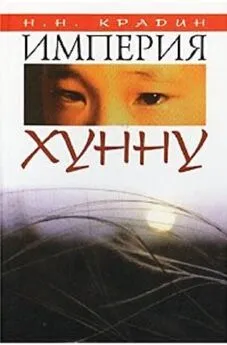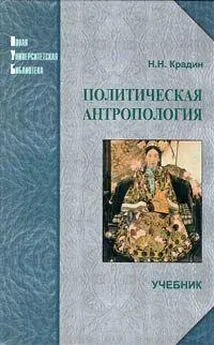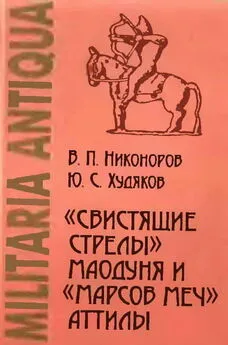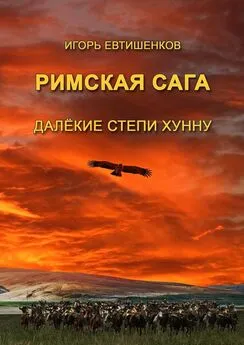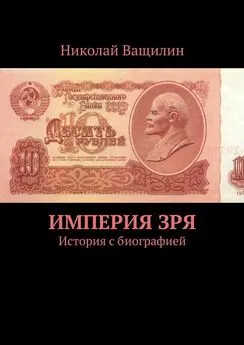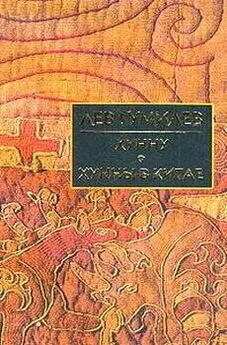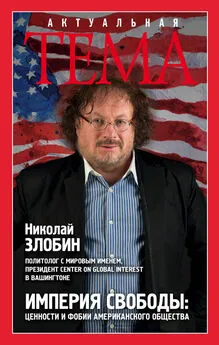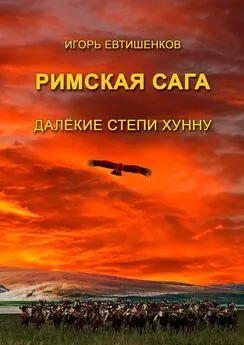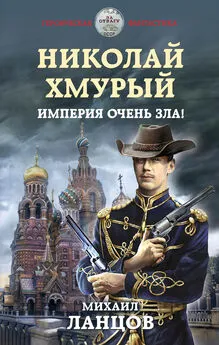Николой Крадин - Империя Хунну
- Название:Империя Хунну
- Автор:
- Жанр:
- Издательство:Логос
- Год:2001
- Город:Москва
- ISBN:5-94010-124-0
- Рейтинг:
- Избранное:Добавить в избранное
-
Отзывы:
-
Ваша оценка:
Николой Крадин - Империя Хунну краткое содержание
Книга предназначена для историков, археологов и этнологов-антропологов. Благодаря ясному языку и увлекательному стилю изложения она привлечет внимание широких кругов читателей, а также всех, интересующихся историей древних цивилизаций.
Империя Хунну - читать онлайн бесплатно полную версию (весь текст целиком)
Интервал:
Закладка:
(5) how did Мао-tun make bold to kill before the father's eyes his 'loved' horse?All know what value has the horse for a nomad and striking a blow to another'srunner implies a striking a blow to its owner; (6) the fact of the fathers murderitself is a very doubletful. In the history of the nomadic world, the events ofmurders in the struggle for the throne were often noted. But I don't know therulers of the nomadic empires of the fathers' killers.
However, the existence of Shan-yii Touman as a real historical person can be called in question. F. Hirth [1910] and K. Shiratori [1902] have noted a consonance of this name with a world 'tuman' meaning 'ten thousand warriors'. Thus, it is possible that Touman is a some collective image but not real father of Mao-tun.
On the whole, a story of advent of Мао-tun to power closely resembles a tale or epic work. A subject has a clear composition structure and is divided into two parts. In the first one, a sequence of events of Мао-tun advent to power is depicted while, in the second, an account of his diplomatic relations with the Tung-hu ruler and war against him gives that comes to a happy end as often happens in the literature works. All of events in both parts run on the principle of chain, and the tension grows gradually until, finally, ends with any action. Such a way of the subject construction called an effect of cumulativity by V.Ya. Propp was widely used in different forms of the folklore works [Пропп 1976].
The second fundamental likeness of a story of Мао-tun rise with the folklore works consists in a principle of triplicity. All events of the chain are repeated three times (as in a tale) but every time with cumulative increase in tension. Initially, Мао-tun shoots at his horse (I omit here a first event of using by Мао-tun the singing arrows), then at the wife and the horse of his father. Only for the third time, he has won the unanimous support on the part of his fighting men. In the second part, he gives up horse, wife and only for the third time mounts a horse and takes the field against Tung-hu.
The third likeness with the folklore works is present in the composition structure. In the folklore, the horse and wife are traditional elements and the enemies threaten to capture them from the main hero (see, for example, «Jangar», «Geser» or tales). Twice, Мао-tun was forced to leave the 'loved' wife's and 'loved' runners.
The fourth likeness of a story of Мао-tun rise with the folklore works was in a description of main personages. In the epos and tales, all of main characters are positive, they express, as a rale, the ideas of the ethnic or mass consciousness. Even if a main hero (character) is forced in the course of events to accomplish the actions which are condemned in real situations, it is in no way reflected on his folklore image. In case of Мао-tun, we see an absolute analogy with aforesaid. By logic of the legend, everybody must ferociously hate him. He is an usurper, patricial and tyrant. However, in the legend and reality, Мао-tun don't look as a dictator (here, a certain parallel comes to mind with the literature image of Chinggis Khan and his real role in the history of the Mongol empire).
Thus, a story of Мао-tun advent to power total by Ssu-ma Ch'ien can not consider as a reliable account of events occurring in Mongolia at the border of 3–2 centuries ВС. One can only say conclusively that Мао-tun come to power by a way of usurpation and, thereafter, he defeated Tung-hu and forced them to pay tribute.
Here, new question arise before us and two of them appear to be most important. The first question is related to dating of all events mentioned in the legend. Alas! The time in the folklore works is not consistent with the real time. It obeys the subject and changes in accordance with the events (characters). But the second question is even more complicated: who was a founder of the 'black' legend of Shan-уй Mao-tun? In the main, this question is a key one an and a clue of the problem as a whole depends on the answer to it.
In accordance with the written and archaeological sources, the pastoral nomadism was a basic business of Hsiung-nu. As for the nomads of Mongolia and Transbaikalia in the later times, the Hsiung-nu bred a typical for Eurasia set of animals: sheep, cattle, horses and, more rarely, goats and camels. In addition, they had also in small proportion other species of domestic animals. The economic system of the Hsiung-nu empire was based not only on the pastoral nomadism. The Hsiung-nu developed the internal sedentarization and promoted the agrarian policy, and handicraft. They created the special settlements at the places fafourable for agriculture where they settled the immigrants from China and personers of war from the settled states. The best known settled sites of Hsiung-nu times are Ivolginsky fort and Dureny settlement in Buryatia.
A different nationality of the settled residents in the west Transbaikalia is confirmed by many arguments of the archaeological studies: (1) predominance in the materials of the Ivolginsky fort excavations of the bones of such ('non-nomadic") animals as dog and pig; (2) fishing business; (3) construction of warmed stove-benches in the houses — kangs; (4) typical Chinese agricultural tools; (5) Chinese shapes of vessels; (6) Chinese hieroglyphes on a pottery; (7) anthropologic determinations of skills from the Ivolginsky cemetery [Гохман 1960].
A problem of contacts between the nomads and farmers is among the permanently discussed problems. Almost the fundamental question is in an estimation of a role of nomads in these processes. Some believed that the nomads were first of all robbers since earliest times and conquerors who brought death and destruction to people. While other considered that nomads were creators of the original mobile culture. The supporters of the latter standpoint see, as a rule, the relations between nomads and settled people within the framework of different conceptions of 'symbiosis'. It would be improper to regard the relation between nomadic and settled people unilaterally, only as enmity since earliest times or, on the country, symbiosis. In a reality, a situation was more complicated. Over the course of the Hsiung-nu empire existence, the relations between nomads and Han have not remained unchanged but have subjected to a particular evolution. One can identify four stages of the Hsiung-nu — Han relations.
At the first stage (200–133 ВС) for extortion of more higher profits, the Hsiung-nu have attempted to alternate the war and raids with the periods of a peaceful co-habitation with China [see Barfield 1981; 1992]. The first raids have been carried out to obtain a booty for all member of the imperial confederation of nomads regardless of their status. The Shan-уй should enlist the support of a majority of tribes being members of the confederation. After the devastating raid, the Shan-уй has, as rule, send the ambassadors to China with an offer to conclude a new agreement of 'A peace and relationship' pr, alternatively, the nomads have continued their raids until the Chinese have applied with an offer to conclude a new agreement. After concluding the agreement and obtaining gifts, the raids have ceased for any time. However, after a time when a booty plundered by simple nomads has finished or become worthless, the cattle-breeders have against begun to demand from chiefs and Shan-yii a satisfaction if their interests. By virtue of the fact the border, the Shan-yu has been forced to 'release a steam' and to issue an order to renew to raids.
The second stage (129-58 ВС) of the Hsiung-nu — Han relations is a period of governing of the Han emperor Wu-di who decided to abolish the strategy of farming from active expansion to the North. The war has been waged with a variable success and rendered lifeless both parties. None of the parties has neached the final victory. As a whole, an experience of a campaign showed that nomads in the steppe war, in spite of munerical superiority of the Chinese, have the unquestionable advantages as before. As a sole important achievement of the aggressive antiHsiung-nu policy of Wi-di, a strengthening of the Han positions in the East Turkestan should be considered. However a 'cold war' between the Steppe and China continued as far as a commencement of civil war within the Hsiung-nu tribes.
The third stage (56 ВС — 9 AD) of the Hsiung-nu — Chinese relations can be marked off since the time of assumption by the Shan-yii Hu-han-yeh of vassalage from the Han emperor. A policy of farming from the nomads by 'gifts' was formally replaced by the system of 'tributal' relations. The Hsiung-nu have undertaken to recognize a suzerainty of Han and to pay a nominal 'tribute'. For this, the emperor has provided the Shan-уй his protection and has given to him as a vassal the reply gifts. In fact, the vassalage of nomads camouflaged in terms reflecting the Chinese ideological superiority has been an old policy of extortion on the side of nomads with the only difference that the reply gifts of the Chinese emperor were vastly larger than before. In addition, as may be necessary, the Shan-yii has obtained from China the agricultural products to support his citizens.
The fourth, last stage (9–48 AD) of relations between the Han empire and Hsiung-nu imperial confederation was similar, by its content, to the first stage. As a pretext for a rupture of peaceful relations, the territorial claims of the Chinese emperor-pretender Wang Mang, his intervention in internal affairs of nomads and, finally, substitution of the Shan-уй seal by the Chinese ambassadors have served. Judging from all this, as opposed to the first stage of relations between the Hsiung-nu and China, the nomads have somewhat changed an emphasis of their foreign-polity strategy towards the stimulation of raids to the Han territory. It is possible this was related to the weakening of the frontier might of China and instable political situation within the country. If earlier the northern frontiers of China were protected using a powerful network of the signaling-guard duties and the towns and most crucial sections of the Great Wall were protected by armed to the teeth garrisons then, at the beginning of the Late dynasty of Han (since 23 AD), a maintenance of such army was beyond the Chinese government's means. The raids were found to be more safe and unpunished for inhabitants of steppe regions, that earlier.
Shan-уй had numerous relatives who belonged to his 'king's' clan of Luan-ti: brothers and nephews, wife's, sons and daughters etc. Besides the relatives of Shan-yii other noble 'families' (clans): Hu-yan, Lan Hsti-pu and Quilin have been among the highest Hsiung-nu aristocracy. The next level in the Hsiung-nu hierarchy has been occupied by the tribal chiefs and elders. In the annals, they are mentioned, as a rule, as 'subordinate kings', 'chief commandants', 'household administrators', chii-ch'U officials [Лидай 1958: 17; see also Groot 1921: 55; Watson 1961a: 163–164; Материалы 1968: 40]. Probably, a part of'chiefs of a thousand' were tribal chiefs. The 'chiefs of a hundred' and 'chiefs of ten' were, most likely, clan leaders of different ranks. The economic judicial, cult, fiscal and military functions were considered as the responsibilities of chiefs and elders. Slightly lower at the hierarchical ladder, the chiefs of non-Hsiung-nu tribes being members of the imperial confederation have been. The Hsiung-nu had a particular strata of service nobility — advisers — immigrants from China and bodyguards.
Basic population of the Hsiung-nu empire has consisted of ordinary nomads — cattle-breeders. Based on some indirect data, one can assume that many most important features of economy, social organization, way of life were essentially little different from the features of the nomads of the Mongolian steppes of more recent times [Egami 1956; 1963; Крадин 1999].
Читать дальшеИнтервал:
Закладка:
